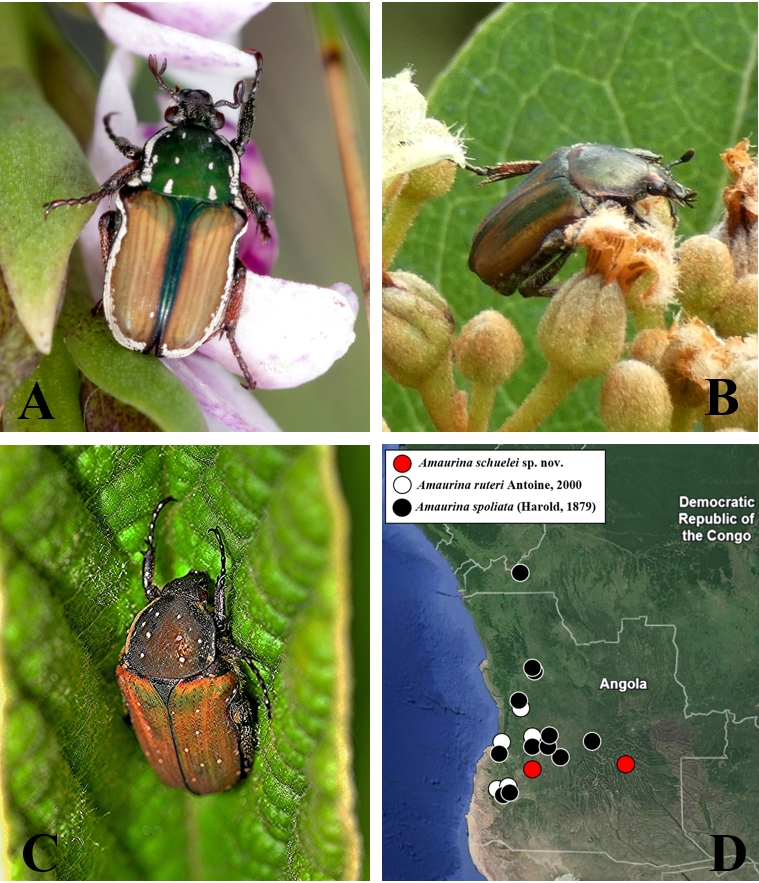Review of the Amaurina Kolbe, 1895 of Angola, with description of a new species (Scarabaeidae: Cetoniinae, Leucocelina)
DOI:
https://doi.org/10.13133/2284-4880/1610Keywords:
Afrotropical Realm, central Africa, new species, regional endemics, biodiversity hotspotAbstract
The genus Amaurina Kolbe, 1895 has undergone a turbulent taxonomic history and is currently composed of five species, two of which have been recorded from Angola thus far. A new species has recently been discovered in the central and eastern parts of this country and is hereby described as A. schuelei sp. nov. This new species is most closely related, both biogeographically and morphologically, to the sympatric A. spoliata (Harold, 1879), but can superficially be separated from this by its smaller size, the more deplanate body shape lined with a white band across its entire perimeter, the more marked umbonal width and a deeper subhumeral arch. Furthermore, its aedeagal parameres differ markedly from those of A. spoliata, and indeed from those of any other species in the genus, by virtue of their extremely reduced external lobes. Only the holotype specimen is currently known physically, but a photographic observation posted on the iNaturalist platform indicates that the species may actually occur across a wide, although poorly accessible, region of Angola and possibly even in neighbouring Zambia.
Downloads

Downloads
Published
How to Cite
Issue
Section
License
Copyright (c) 2024 Renzo Perissinotto, Petr Malec

This work is licensed under a Creative Commons Attribution-NonCommercial-ShareAlike 4.0 International License.




